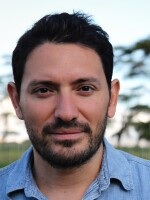It's no secret that the water at some of the 2016 Olympic venues in Rio de Janeiro has some problems.
NPR's Lourdes Garcia-Navarro got a whiff of one venue in April. But The Associated Press has just put some science into it by commissioning tests over a five-month period.
What the wire service found is pretty gross. In short, the water is "rife with human sewage," teeming with high levels of viruses and bacteria. Not a single Olympic venue, the AP testing found, is fit for swimming or boating.
The AP reports:
"Brazilian officials insist the waters will be safe, but the AP testing over five months found not one venue fit for swimming or boating, according to international experts, who say it's too late for a cleanup.
" 'What you have there is basically raw sewage,' said John Griffith, a marine biologist at the independent Southern California Coastal Water Research Project. Griffith examined the protocols, methodology and results of the AP tests. 'It's all the water from the toilets and the showers and whatever people put down their sinks, all mixed up, and it's going out into the beach waters.'
"In the U.S., Griffith said, areas with such levels of contamination 'would be shut down immediately.' "
The raw numbers? In one venue, the Rodrigo de Freitas lake, the AP found 14 million adenoviruses per liter to 1.7 billion per liter.
For comparison, authorities in Southern California would be concerned if that level was at 1,000 adenoviruses per liter.
Copyright 2021 NPR. To see more, visit https://www.npr.org.



